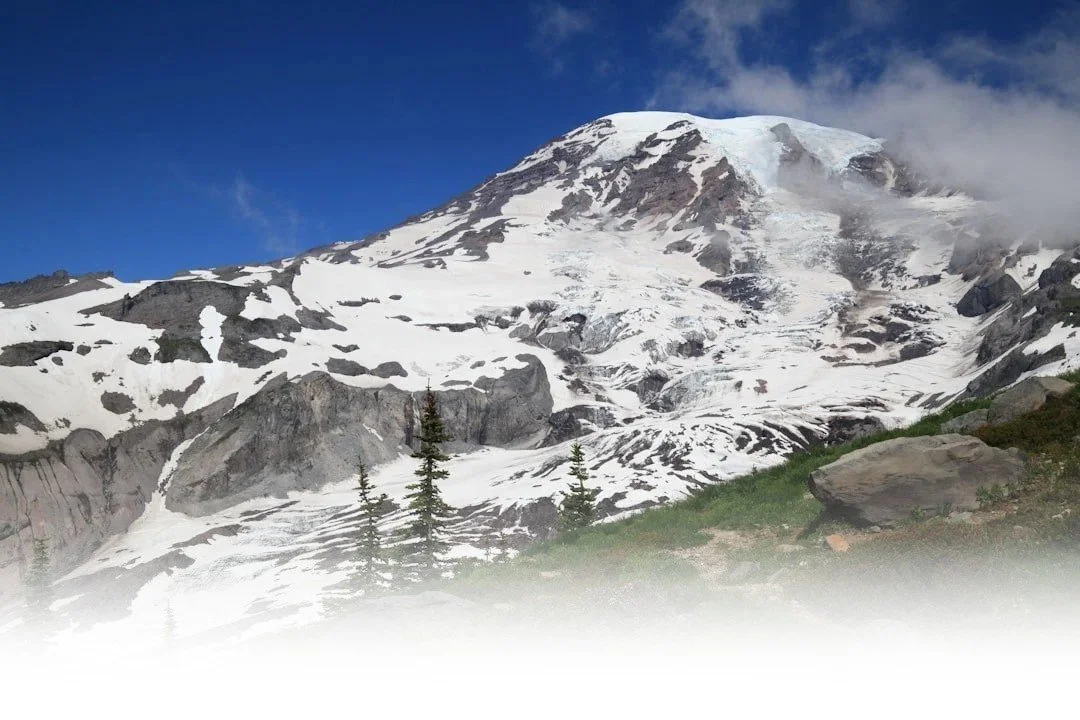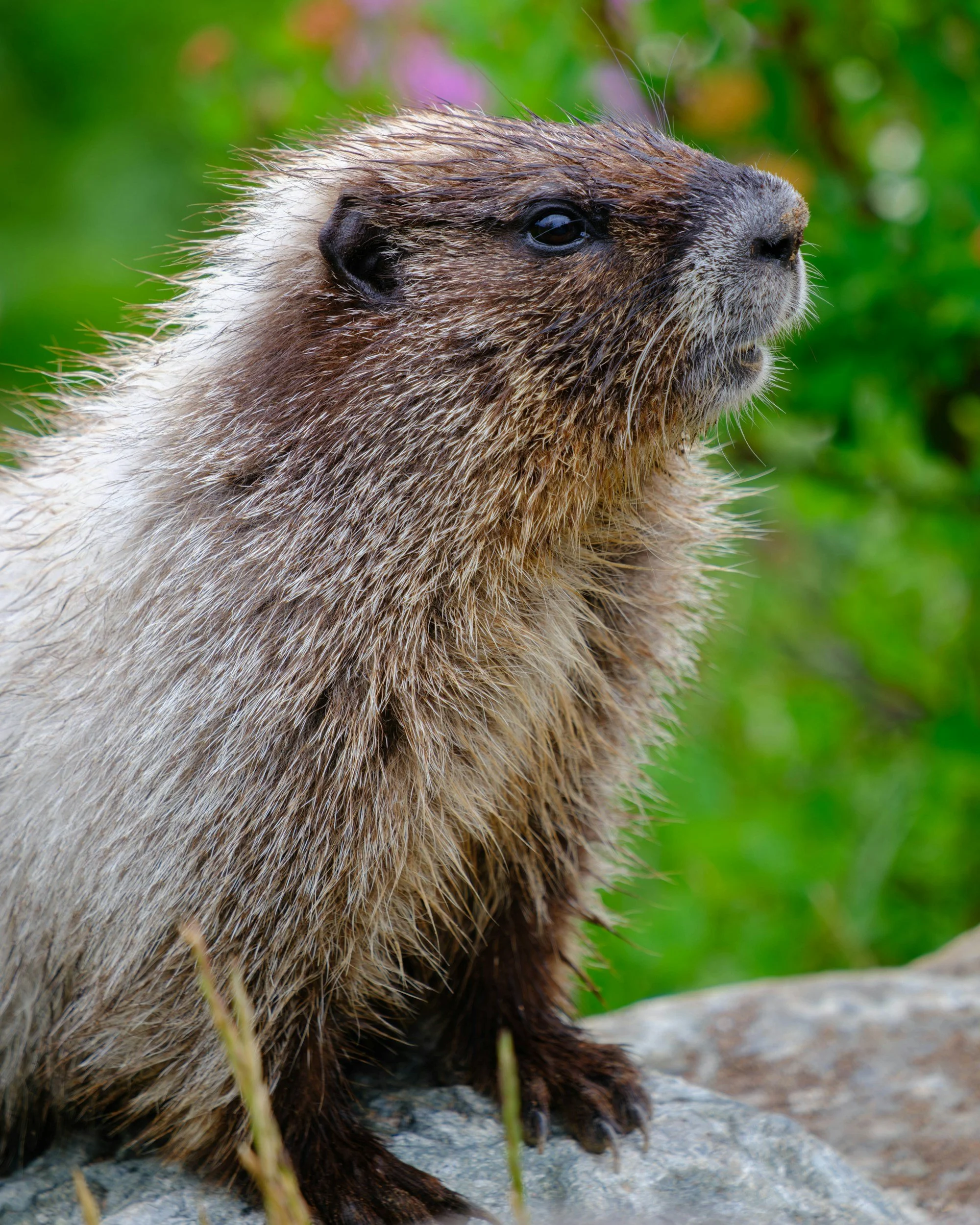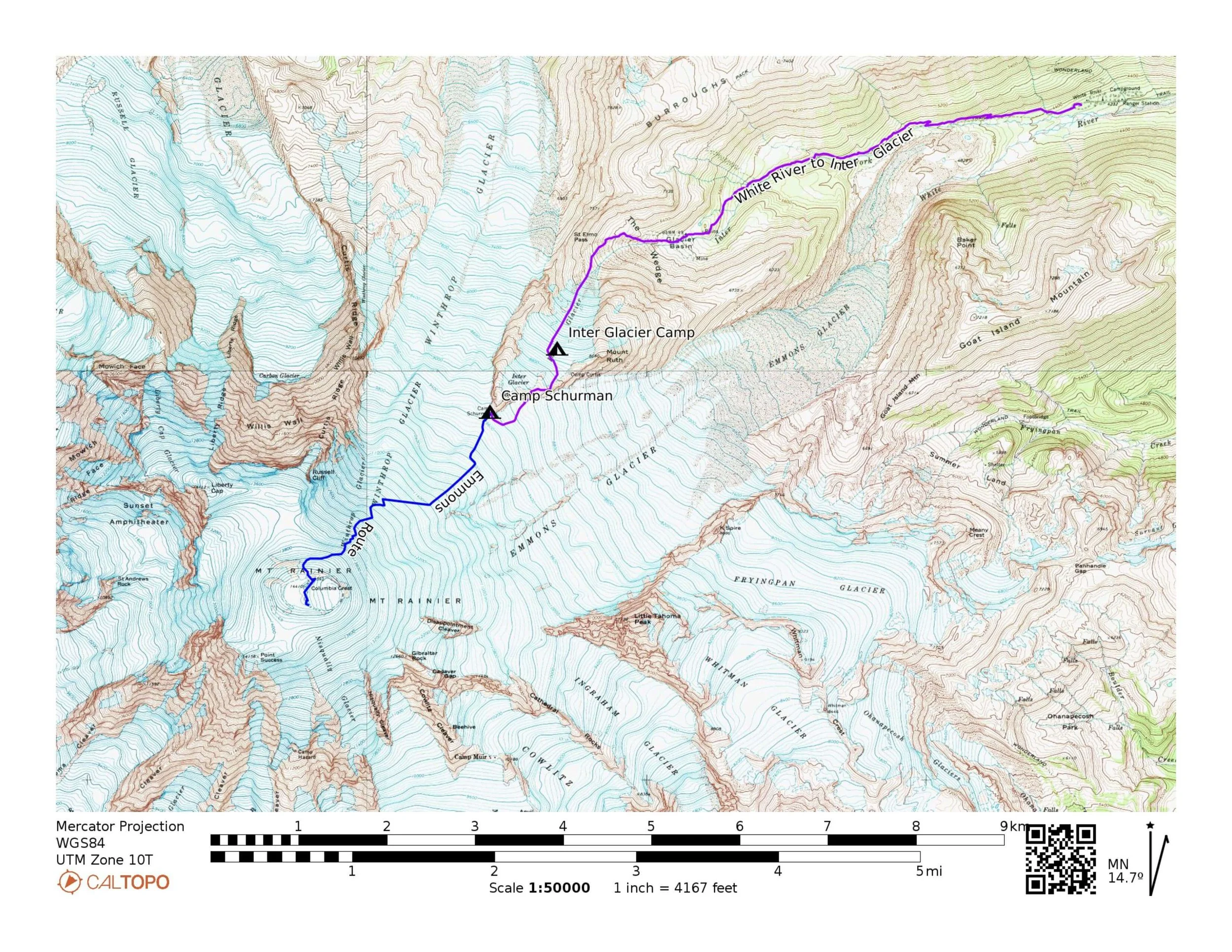
Climb Mount Rainier
Once a year, Skyward Mountaineering offers a customized, small group climbing trip on Mount Rainier. Join us for this exclusive and unforgettable guided ascent of Mount Rainier, one of North America’s most iconic peaks. Standing 14,411 ft Mt. Rainier towers over the other peaks in the Pacific Northwest and offers a truly unique alpine challenge - it is a test of endurance and mountaineering technique on a massive glaciated volcanic peak. With only one trip per year, this limited availability climb is with our premier IFMGA Guides who will teach you the nuances of advanced mountaineering skills as well as provide insight into the rich cultural and natural history of Mount Rainier all while navigating complex glaciers and steep snow and ice slopes to the summit. Our route of choice varies each year, though we always prioritize avoiding the crowds and seeking out more adventurous routes from the standard in order to embrace the customization of this unique opportunity.

Intermediate glacier mountaineering
2026: Emmons Route
2027: Kautz Route
Previous mountaineering experience is required
4 day planned itinerary, with an extra day optional for poor weather
June 15 - 19, 2026
2027 dates TBA
Mount Rainier
14,411 ft / 4,392 m
Emmons Route 4 day itinerary
-
Hike from White River Campground (4,300 ft) along the Glacier Basin Trail to Sherpa Rock where we start ascending more steeply up a snow slope to the Inter Glacier Camp (8,500 ft). Set up tents on the snow at the base of the Inter Glacier for overnight camping.
Distance: 4.5 miles
Elevation gain: 4,100 feet
Total time: 5 hours -
The first half of the day incorporates in-the-field review of techniques and systems for glacier travel and snow climbing. Pack up camp and continue approach to Camp Schurman (9,500 ft). If camp is busy or conditions warrant, we may continue past Camp Schurman another 300ft to the Emmons Flats - a large bench on the Emmons Glacier above Steamboat Prow. A possible benefit of utilizing this upper camp is setting the team up for slightly less travel during summit day.
This should be an active recovery day and an opportunity to practice climbing systems.
Distance: 1.5 miles
Elevation gain: 1,000 feet
Total time: 2.5 hours -
At dark-o-clock we wake up and begin our climb to the summit of Mount Rainier via the Emmons Route, navigating crevasses and steep snow along the Emmons-Winthrop Glaciers. The climb begins above camp by navigating up “The Corridor” - a straightforward and sustained snow ridge up to ~11,600ft. Above this, there are often numerous crevasses and snow bridges that require careful navigation, sometimes the route is quite direct to the summit rim or may require significant end-running of the crevasses. Towards the top of Mount Rainier the conditions are typically firm snow and increasingly steep, with sustained slopes up to 40°. We traverse the summit crater to Columbia Crest at 14,411ft - the true summit of Mount Rainier. We’ll enjoy the sunrise and a rest at the scenic summit crater before descending the same route back to Camp Schurman. Once back at basecamp we relax and enjoy a well earned tasty dinner.
Distance: 3 miles
Elevation gain: 4,800 feet
Total time: 10 hours -
We’ll enjoy a leisurely morning wake-up and pack up camp before hiking out to the trailhead, utilizing rope team travel on the Inter Glacier.
-
This day is built into the itinerary to allow for flexibility with inclement weather. We may adjust the itinerary to delay by one day or stay in the field while waiting for a summit bid. Possible rest day activities include additional snow school involving more complex topics such as crevasse rescue systems and steeper climbing techniques near Camp Schurman.







Frequently asked questions
Below are answers to common questions about climbing Mount Rainier with Skyward Mountaineering:
-
The Emmons Route is an intermediate glaciated mountaineering route that ascends the massive glaciated terrain at the intersection of the Emmons and Winthrop Glaciers, spilling from the summit of Mount Rainier. The Emmons Route is similar in difficulty to Mount Rainier’s “standard” route on the Disappointment Cleaver, though there are significant differences that do make the climbing more committing and more difficult overall.
The Disappointment Cleaver is a much busier route. In comparison, the Emmons Route is more secluded and parties must be more autonomous.
Due to the popularity of the Disappointment Cleaver, especially with guide services, the route is “maintained” - meaning that guides will shovel steep switchbacks to make it easier, use ladders to bridge across crevasses and mark the path with wands. The Emmons Route on the other hand is only natural. Climbers must navigate around crevasses, climb steeper snow that has not been shoveled to be easier and navigate the route without the aide of a marked pathway.
Overall, the Emmons Route ascends steeper snow than the Disappointment Cleaver. Climbers should have secure footwork and be familiar with steep snow climbing techniques (we do still have climbing movement review time before summit day).
The Emmons Route thankfully tends to have less overhead hazard from seracs and rock fall than the Disappointment Cleaver.
-
Climbers should have previous moderate to steep snow climbing and glacier travel experience. Additionally, due to the length and remote nature of the route, climbers must have a high level of fitness and have previous experience with overnight camping in the mountains. Climbers can expect to carry overnight packs with ~50 lbs and summit day to last 9-12 hours roundtrip.
Here’s some example benchmarks for when you’re ready to climb Mount Rainier via the Emmons Route with Skyward Mountaineering:
Maintain an uphill pace with a 25lb backpack for 1,000ft per hour.
Comfortable climbing and descending 50 degree firm snow.
Easton Glacier on Mount Baker is a good preparatory mountaineering route.
Hotlum Glacier on Mount Shasta is another good preparatory mountaineering route.
Skyward Mountaineering provides pre-trip coaching and skill development/assessments to help you prepare. If you have questions about your previous experience or fitness get in touch and we’re happy to make recommendations and climb with you in person to help you prepare.
-
The Emmons and Winthrop Glaciers cover approximately 1/4 of Mount Rainier’s surface, making it the largest glaciated climb on the volcano. The Emmons glacier is named after a prominent geologist, Samuel Franklin Emmons, who climbed Mount Rainier in 1870. The Winthrop glacier is named after Theodore Winthrop, a writer and traveler who described the glacier in 1862. Separately, Theodore Winthrop is also well known as one of the first Union soldiers to be killed in the Civil War.
The Emmons-Winthrop was first climbed in August 1884 and remains a popular early summer climbing route on Mount Rainier.
-
Captain George Vancouver, a British explorer who surveyed the northwest coast of North America from Baja California to Alaska’s Cook Inlet, named Mount Rainier after Admiral Peter Rainier in 1792. Admiral Rainier never explored the Pacific Northwest or even saw the mountain, in fact he fought against the United States in the Revolutionary War. The mountain holds important context for many indigenous tribes throughout the region and has a multitude of original names due to the different Native languages spoken including Lushootseed, Klallam and Twana to the north and west; Upper Chehalis and Cowlitz to the southwest; and Ichishkíin to the east and south. In fact, there are ~20 known names for the mountain, including:
taqʷuʔman
təqʷuʔməʔ
təqʷuʔbəd
xʷaq’ʷ ,
t(xʷ)xʷaq’ʷ
tax̌uma
taquʔmən
nšʔaʔk’ʷiyqł
dəxʷwak’ʷ
nəxʷwək’ʷ
ya lamətay
There have been multiple calls from local tribes and the broader Pacific Northwest communities to rename Mount Rainier to an original Indigenous name, with the most popular options being Tahoma, Takhoma, or Ta-co-bet. The Puyallup tribe interprets these names as meaning “Mother of Waters”.
Indigenous tribes have interacted with the land now administered by Mount Rainier National Park since time immemorial and is the Ancestral homeland of the Cowlitz, Muckleshoot, Nisqually, Puyallup, Squaxin Island, Yakama and Coast Salish people. Native peoples remain dedicated caretakers of this landscape and continue to play an important role in understanding the human and cultural history of the mountain.
In 1899, Mount Rainier National Park became official due to the combined efforts of scientists, conservation groups (such as the Sierra Club which at the time was presided over by John Muir), railroad companies and local businesses that saw opportunities in tourism.
-
We have a detailed equipment list to help you prepare and pack for your climbing expedition. If you have questions about any of the gear please let us know, we’re happy to help make recommendations or clarify. Climbers are responsible for providing their own personal clothing, climbing and camping gear.
Skyward Mountaineering provides all of the group camping and climbing equipment, this includes personal tents and a cook tent, stoves and cookware, camp maintenance gear, ropes, snow/ice protection, anchor material, and other technical equipment. Climbers can expect to sleep 2 people per 3 person tent, this gives you a bit of extra room to stretch out and be comfortable while still having a partner to help carry the weight of the tent.
-
Our Mount Rainier guided climbing trips are only available once a year with a maximum of 4 climbers and 2 guides. If you are interested we highly recommend you get in touch with our team so you’ll be notified as soon as dates are available. If space is still available, you can book your trip directly on our website.
If you have questions about whether climbing Mount Rainier is right for you, please contact us.





